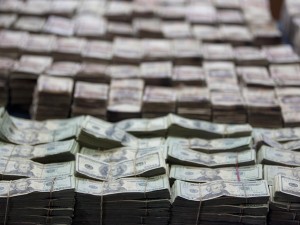
rising dollar reserves were among the factors that enticed foreign fund managers to do business here as the Philippines posted a net foreign direct investments inflow of $108 million in July, a reversal of the $261-million net outflow in the same month last year. AP FILE PHOTO
The country posted a net foreign direct investments inflow of $108 million in July, a reversal of the $261-million net outflow in the same month last year.
Monetary officials attributed this to the country’s improving macroeconomic fundamentals.
The Bangko Sentral ng Pilipinas said the respectable growth of the economy, improving fiscal condition of the government, benign inflation and rising dollar reserves were some of the factors that enticed foreign fund managers to do business here.
Gross inflows in July reached $112 million, while gross outflows hit $4 million.
“All FDI components posted positive balances during the month, reflecting investors’ growing optimism on the country’s macroeconomic fundamentals,” the BSP said in a statement.
The bulk of the investments during the month came from the United States, Thailand and Japan. The investments benefited the information and communications, real estate, manufacturing, mining and financial intermediation sectors, the BSP added.
Investments in July boosted the total net FDI inflow in the first seven months to $1.025 billion, up from $568 million in the same period last year.
The growth in FDI inflows fueled hopes that the Philippines will be able to catch up with its neighbors in terms of attracting job-generating foreign investments.
The Philippines has been lagging behind most of its Southeast Asian neighbors in terms of FDI inflows. Among the factors that hamper the entry of investments into the country are insufficient infrastructure, corruption and the tedious process of setting up businesses.
Government economic officials, however, claimed that ongoing efforts to boost public infrastructure spending, to address corruption and simplify business registration process were expected to soon drive more FDIs into the country.
BSP Deputy Governor Diwa Guinigundo earlier said it was just a matter of time before the Philippines would be able to catch up with, if not outperform, some of its Asian peers in terms of FDI inflows.
He said foreign investors had started noticing the country’s positive macroeconomic fundamentals.
Government economic officials also are optimistic the country will be able to get an investment grade rating by 2013. Should this happen, they said, a surge in FDI could be expected.
The Philippines is currently rated two notches below investment grade by Moody’s Investors Service and one notch below by Standard & Poor’s and Fitch Ratings.

